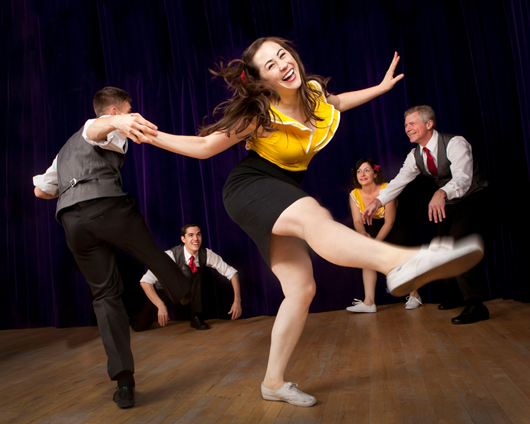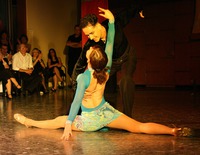Perfection on stage is not so easy to achieve. Every move has to be rigorously practiced and choreographed to make it look seamless on stage.
But the good news is, it’s not impossible!
Professional dancers all over the world use different techniques to achieve fluidity on the stage. But is dancing the only thing stage performers should be concerned about?
Dancing is just one aspect of a stage performance. You, as a dancer, also have to learn to take the crowd along with you.
A good performer knows how to interact with the audience, and how to get them more involved in the performance.
Here are 7 practical tips to make yourself a better performer on stage:
1. Rehearse,
Rehearse, Rehearse
A big key to success for any performance is to plan it thoroughly, and rehearse as much as you can.
As you go through your rehearsals, practice the performance as if you’re on stage. Try to be active. A lazy rehearsal will put you off rhythm, which will affect your actual performance on stage.
Also, choreographing your moves in advance will help you add more meaning and depth to your movements. A dance performance is all about how much
it can affect and interest an audience. If your performance is not well thought out, it will come off as unprofessional, and you will come across as uninterested.
If you are practicing a dance alone, try to occasionally perform in front of a live audience. Whether you rehearse in front of your friend, your mother, or your dog, just learn to stay in character.
This will also help you gauge the reaction of the audience, and get reviews about what aspects of the dance can be improved before the final performance.
2. The Eighty Percent Rule
This is a general rule usually used by performers to calm their nerves on the day of the performance.
All you have to do is dial it down to eighty. Literally. Whatever you are doing, do it at 80% of the speed that you would usually do it.
In a dance performance, this can help you slow down your movements and manage them better. The nervous energy in your body can make you dancer faster than you normally would, so the eighty percent rule can help you maintain just the right speed for the performance.
Try it if you are feeling nervous or jerky before dancing on the stage!
3. Warm Up to Storm Up!
It is always good to warm up before a performance, and get all your relevant muscles activated and raring to go on stage, and breakout into dance.
Warming up will also help you focus your mind on the performance, and think through the different movements and steps you have to perform when you’re out there.
But be careful. Doing a warm up for too long may result in fatigue, and warming up too early before a performance may cause your muscles to go cold again, which means all your effort might go to waste.
Warm up just before your performance, and activate all the muscles you are going to utilize. Start from the feet, and slowly move your way up through the body.
4. Remember to Eat Healthy
Dancers have to pay special attention to their diet, because physical fitness is extremely important if you want to be a good dancer.
Eating healthy will help you stay alert and focused on your performance, and will get you moving with the right gusto.
Try to plan out your diet leading up to your performance as this will help you manage the amount of fatigue you are soaking up during the dance rehearsals.
Many performers push themselves too far in preparations without taking care of their diet, and this reflects badly in their performances.
Quick Tip: Drink lots of water, and stay hydrated before the performance. If your body is not hydrated, your movements will slow down.
5. Mirrors: YES and NO
Divide your time during rehearsals performing with and without mirrors.
While it’s good to dance in front of a mirror sometimes, you will get a more natural feel of the stage if you dance without one. It can help you iron out many of the flaws in your dance moves, and get you more acquainted to dancing without seeing your every move being reflected back at you.
In addition, if you have partners with you in the performance, dancing without mirrors can help you figure out more intuitively how they will move on the actual stage.
6. Record a Video of Yourself
Recording a video of yourself can be a powerful ally if you want to further improve and perfect your dance routine.
It can help you analyze your movements, and also choreograph and coordinate your moves with the other dancers. A dance is not just an interaction between you and the audience; it is also an interaction between you and the other dancer/dancers around you.
Another advantage of recording yourself is that unlike with mirrors, you can always replay a move in a video, and use that to either improve on it or reproduce it.
7. Stay
Positive and Enjoy Your Performance
Bring a positive mind-set to the table. While it is true that many things can go wrong during a performance, you have to learn to embrace it all.
Dancing is supposed to be fun, and if you don’t enjoy it, then you are not doing it right. If you make a mistake, fix it candidly like the Mean Girls did in their Christmas jingle.
If you approach everything in a positive way, it will make your movements look more expressive and natural. It will also stop you from panicking, because you will be fully embracing the experience.
 USD
USD
 EUR
EUR
 AUD
AUD
 GBP
GBP
 SGD
SGD


